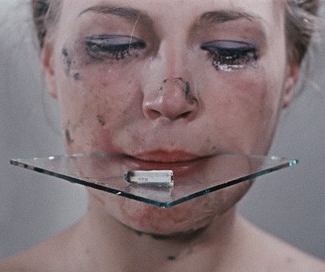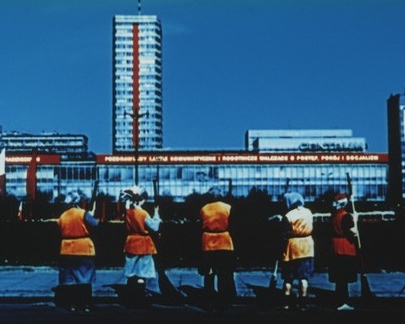This film is an episode from a series of short films titled Open Form that resulted from collaborations among the circle gathered around the Faculty of Sculpture of the Warsaw Academy of Fine Arts, notably Przemysław Kwiek (b. 1945) and Zofia Kulik (b. 1947), the two members of the KwieKulik duo, as well as Jan S. Wojciechowski and students of the cinematography and acting departments of the Film School in Łódź. Led by architect Oskar Hansen, the faculty became a center of teaching informed by the theory of Open Form, which Hansen developed in 1959. Formulated for the field of architecture, Open Form became among Hansen’s students a guiding principle in the visual arts more broadly understood.
The mission of an Open Form architect was to provide backgrounds and frameworks within which human activity could flourish without being confined. In a similar spirit, the film project Open Form did not rely on a detailed script but merely supplied a range of strategies that could be used for making its episodes unfold. The strategy for the episode shown here was to play a kind of visual game—something that Open Form artists did often and of which Game on an Actress’s Face is a model example. The visual game played by the group involved individual “moves” made by several artists in succession. With every move, each artist had to relate to the move made by the previous participant and then make a statement of her or his own, bearing in mind that he or she was thus creating a context for the next participant to draw upon. Game on an Actress’s Face exemplifies this strategy, shooting step by step the “moves” that players behind the frame make as they place objects and substances on the “blank canvas” offered up by the face of acting student Ewa Lemańska. — Łukasz Mojsak
The organizers would like to thank the KwieKulik Archive, Łukasz Mojsak, and the Museum of Modern Art, Warsaw, for their help in making a screening of this film possible in Washington.


